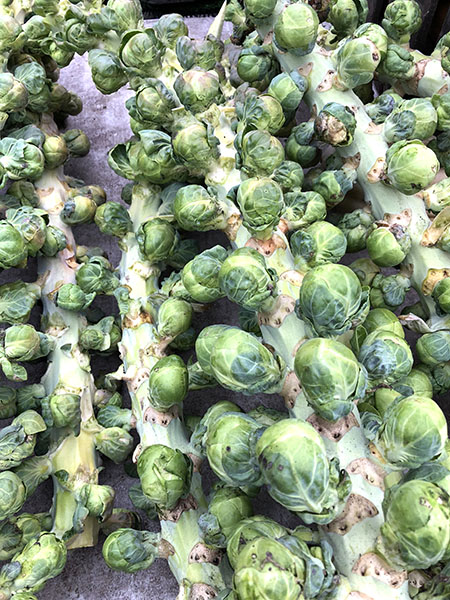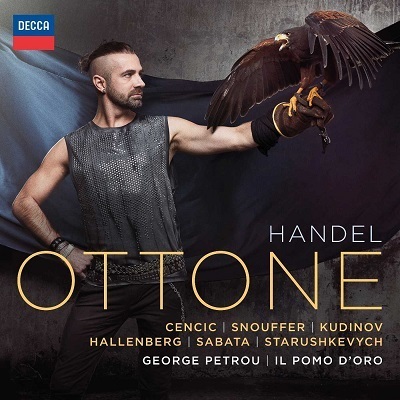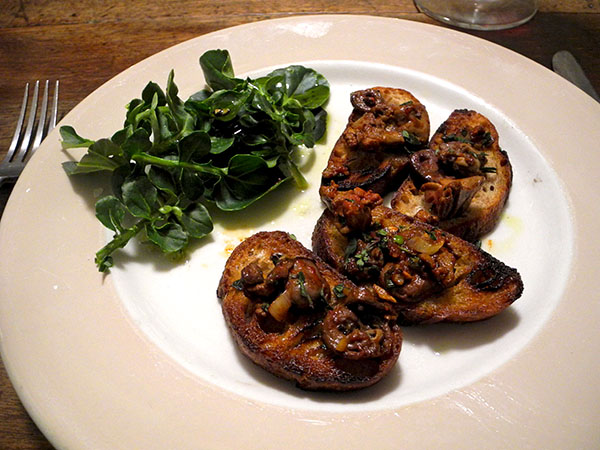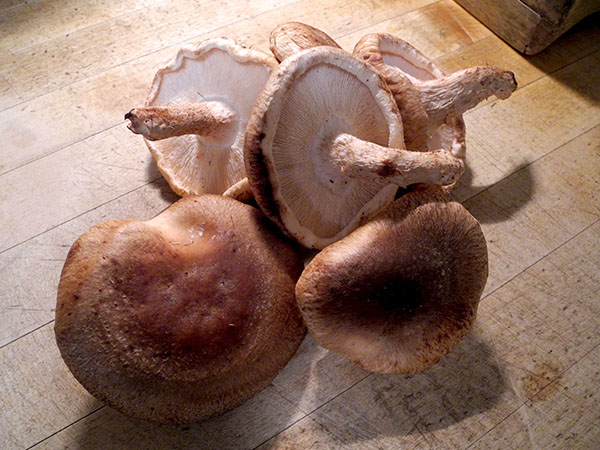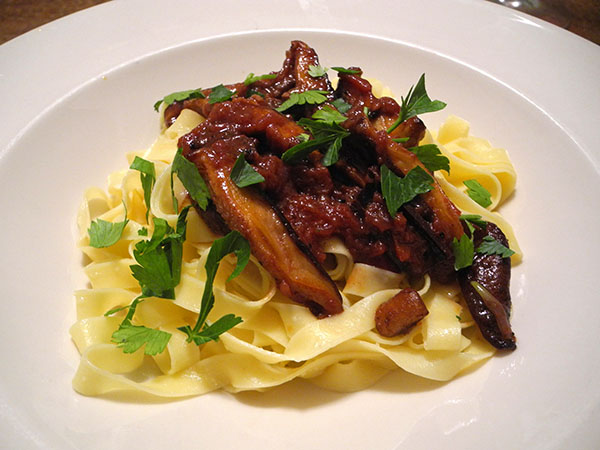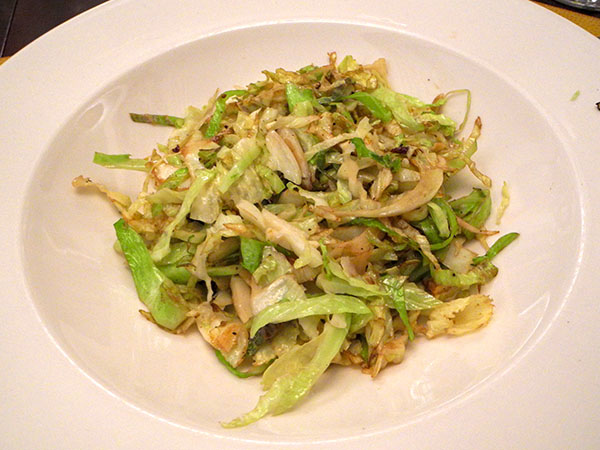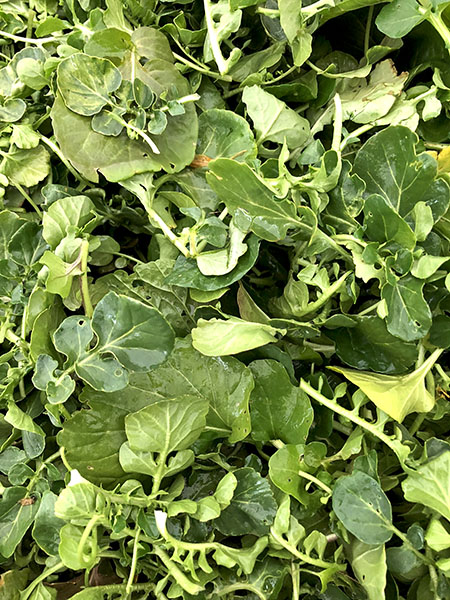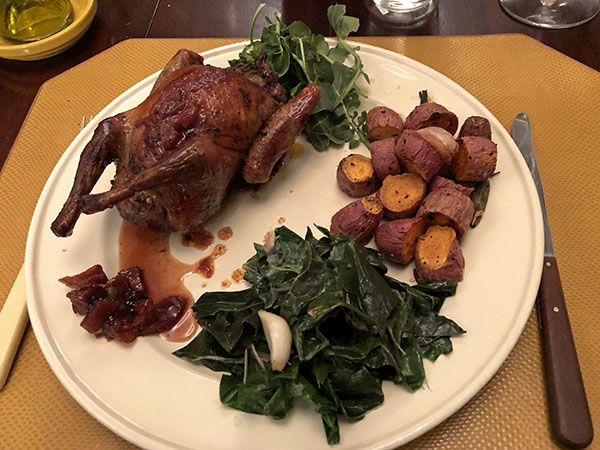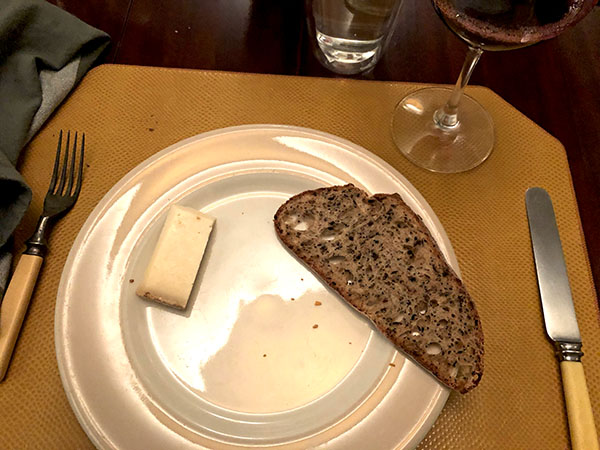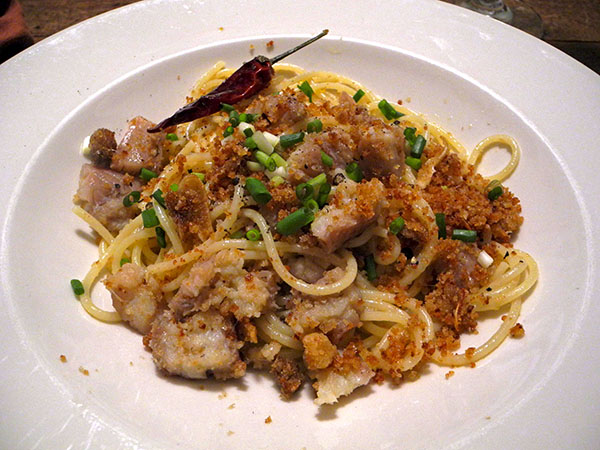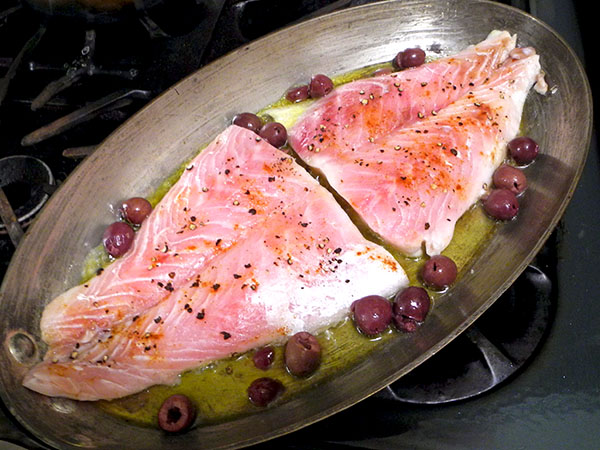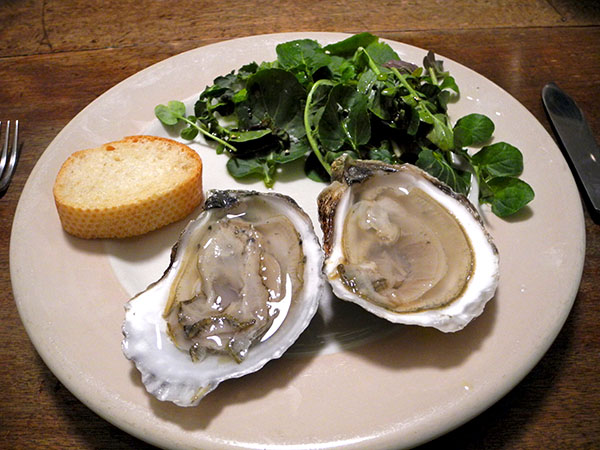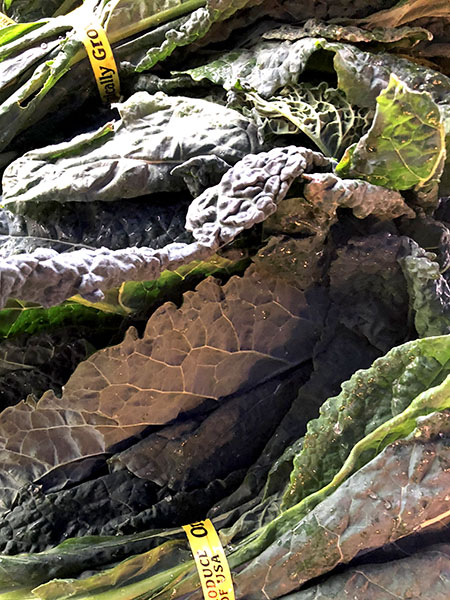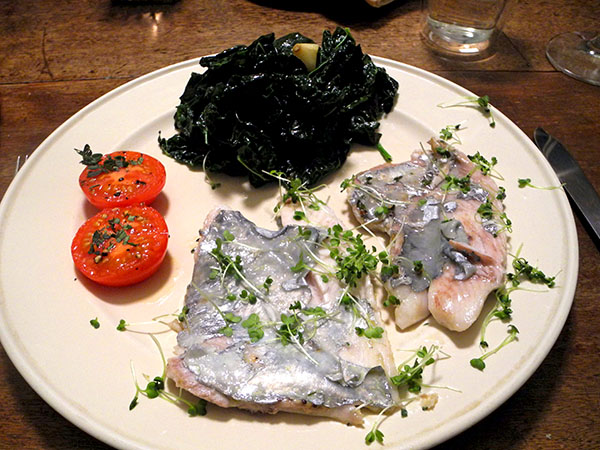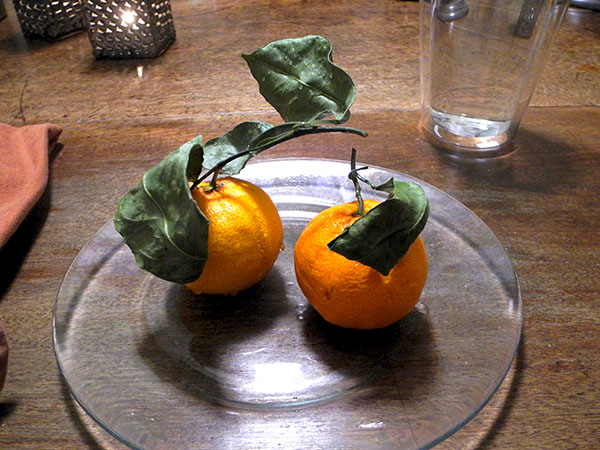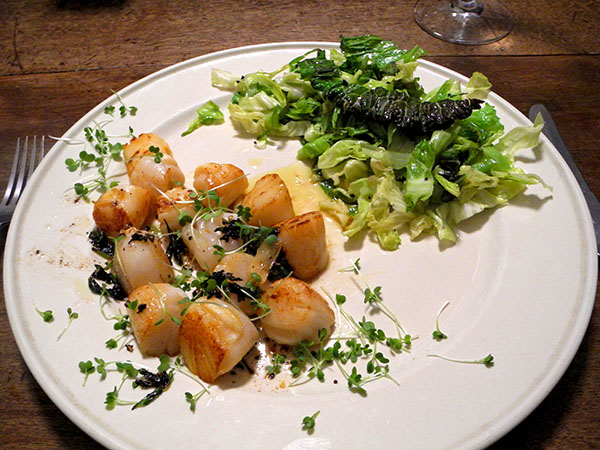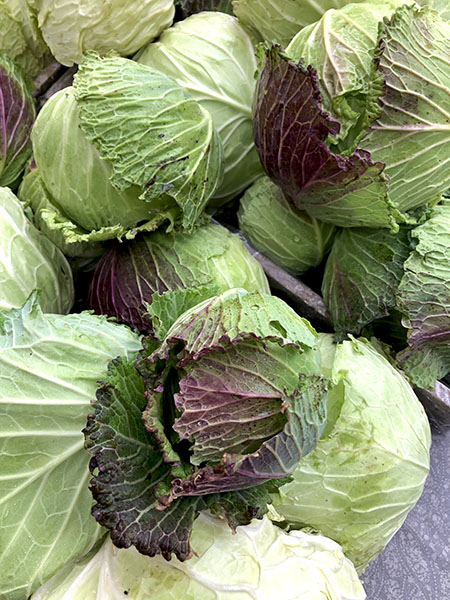
I had learned from the Union Square Greenmarket app that there would be no fish sellers there Saturday (almost certainly because of the extreme cold), but I figured if I got there early enough, I might still be able to buy some local (Newburgh, an indoor aquaculture farm) shrimp for dinner that day. I also had to pick up some fresh vegetables for meals over the next 3 days, so the walk in the bitter cold and snow was going to be worth it anyway.
I was lucky with the entrée search, and came home with some”colossals”, just about the last of Jean Claude’s stock that day.
The first course, dominated by slices of an Italian smoked ham, made the meal something of an odd surf ‘n turf event, but the fact that there was also a strong smoky aroma and taste in the main course (a smoked pepper) brought it all together.
- five or 6 ounces of thinly-sliced Recla Speck Alto Adige IGP, from Bolzano, purchased at Eataly, drizzled lightly with a very good Sicilian olive oil, from from Agricento, Azienda Agricola Mandranova (exclusively Nocellara olives)
- a few leaves of ‘baby Romano’ (oak leaf speckled lettuce) from Eckerton Hill Farm dressed with the same olive oil, Maldon salt, and freshly-ground black pepper
- slices of a buckwheat baguette from Runner & Stone Bakery
The Speck was followed by a plate of the shrimp and a side of tomatoes and baby leek.
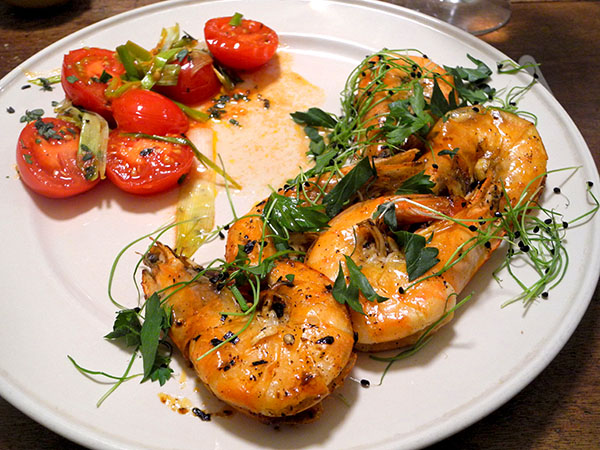
I prepared the shrimp in the same way I had for the 2 years I’ve been enjoying ECO Shrimp Garden’s harvests.
- one teaspoon of chopped Rocambole garlic from Keith’s Farm, heated inside a heavy (13 1/2″) cast iron pan over a very low flame until the garlic had colored nicely, a pinch of Spanish saffron, pieces of one dried chipotle pepper from Northshire Farms in the Union Square Greenmarket (I have always used a whole one, but this time tried the broken pieces of one of the peppers in the package), one crushed section of a dried orange-gold habanada pepper, and a teaspoon of freshly-ground dried cumin seed from Eataly added, all of it stirred for a minute or two, then 15 ounces (10 count) of Hudson Valley farmed ‘colossal’ shrimp from Eco Shrimp Garden (that I had cut the length of their backs, from head to tail, for ease of shelling later, added, seasoned with salt and pepper, the heat brought up a bit, and the shrimp cooked until firm while turned twice [they were delicious, but slightly overcooked, probably because I had overcompensated for their larger-than-normal size], served with a generous squeeze of lemon, garnished on the plates with chopped parlsley from S. & S.O. Produce and micro scallion from Two Guys from Woodbridge [the micro green touch was my own, after completing Mark Bittman’s terrific recipe, and may seem like overkill, but they worked with the other flavors, and look pretty good]
NOTE: There was more than enough sauce in the end, so I gathered what I wasn’t going to use, allowed it to cool a bit, and swirled it into a couple tablespoons of softened butter, to use as a flavored butter in some future meal.
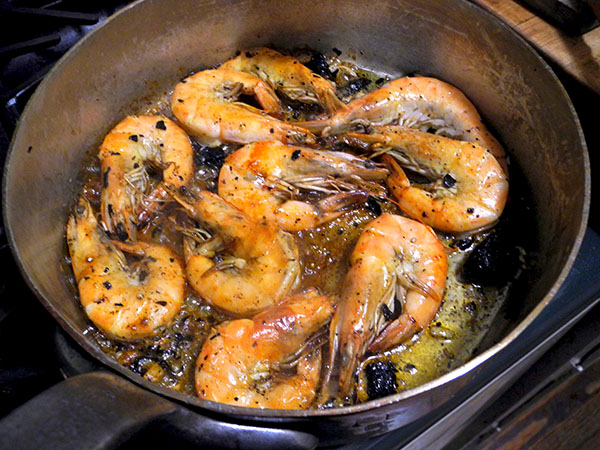
- one Japanese scallion from Norwich Meadows Farm, washed, dried, sliced lengthwise, then halved, cooked in heated olive oil until wilted, 6 Maine Backyard Farms ‘cocktail tomatoes’ from Whole Foods Market, halved, slipped into the pan and heated briefly, then a generous amount of chopped thyme from Stoke’s Farm, some sea salt, and black pepper added and stirred into the vegetables, served with a little more of the chopped thyme
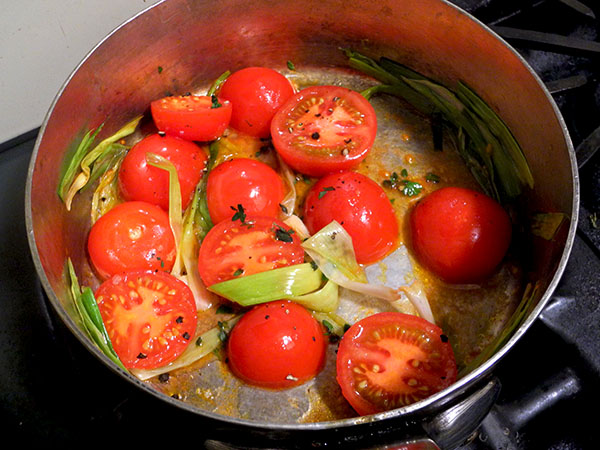
- the wine was a California (Lodi) white, Karen Birmingham Sauvignon Blanc Lodi 2016, from Naked Wines
- the music was Pergolesi’s 1734 opera, ‘Adriano in Siria’, performed by Romina Basso (Mezzo Soprano), the unbelievably-beautiful voice of Franco Fagioli (Countertenor), Yuriy Mynenko (Countertenor), Juan Sancho (Tenor), Cigdem Soyarslan (Soprano), with Jan Tomasz Adamus conducting the Capella Cracoviensis



